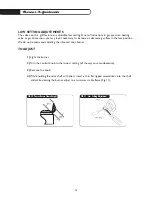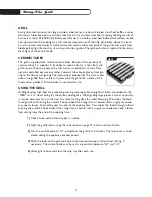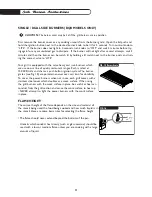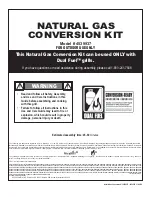
5
Safety Practices & Precautions
• Do not use the grill for cooking excessively fatty meats or products which promote flare-ups.
• Never grill without the drip pan in place and pushed all the way to the back of the grill.Without it
hot grease could leak downward and produce a fire or explosion hazard.
• Do not operate the grill under unprotected combustible construction. Use only in well ventilated
areas.
• Do not use in buildings, garages, sheds, breezeway or other such enclosed areas.This unit is for
outdoor use only.
• Keep the area surrounding the grill free from combustible materials, trash, or combustible fluids and
vapors such as gasoline or charcoal lighter fluid. Do not obstruct the flow of combustion and
ventilation air.
• If a cart unit is stored indoors ensure that it is cool, fold the side shelf down, then push, never pull,
the grill. If LP, the cylinder must be unhooked and the LP cylinder stored outside in a well ventilated
area, out of reach of children.
• Do not use charcoal in the grill.
• Never use the grill in a windy area.
• Keep the electrical supply cord, or the rotisserie motor cord away from the heated areas of the grill.
When plugging the rotisserie motor into the convenience outlet (carted units) be sure the cord does
not come in contact with the upper areas of the grill.
• Never use the grill in windy conditions. If located in a consistently windy area (oceanfront,
mountaintop, etc.) a wind break will be required. Always adhere to the specified clearances listed.
• Never use a dented or rusty LP tank. Keep the ventilation openings of the cylinder enclosure free
and clear from debris.
• Never pinch or cut the supplied power cable. Prevent the cable from lying on the ground, sitting in
water or coming into contact with the hot surfaces of the grill. Avoid placing the cable where it
could be strained, chaffed or cut by sharp edges.







































